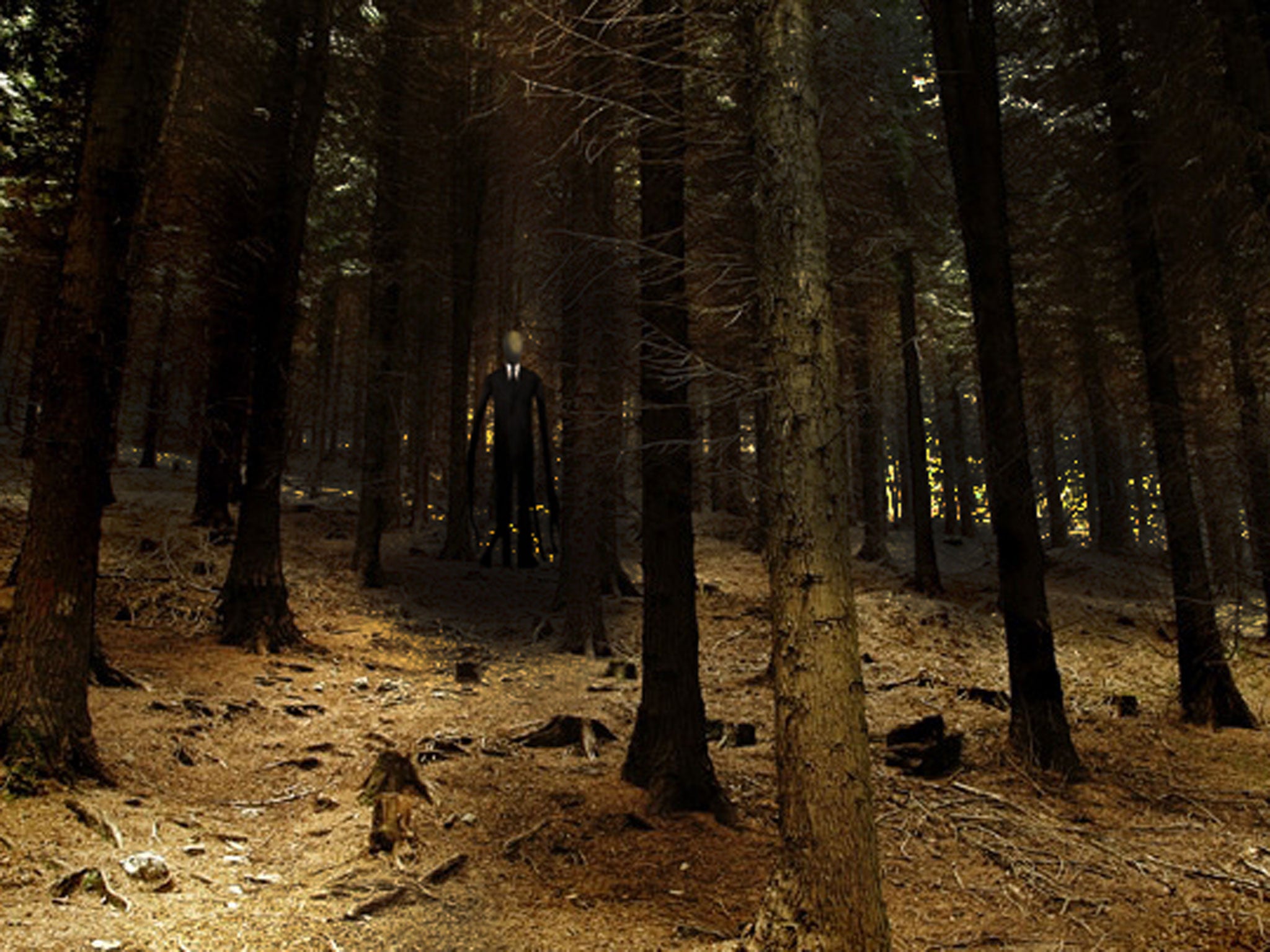Creepypasta: the digital campfires where the Slender Man was born
The Slender Man 'myth' has come back into the headlines this week as the trial of two girls alleged to have tried to kill in its name begins. But where did it come from?

Your support helps us to tell the story
From reproductive rights to climate change to Big Tech, The Independent is on the ground when the story is developing. Whether it's investigating the financials of Elon Musk's pro-Trump PAC or producing our latest documentary, 'The A Word', which shines a light on the American women fighting for reproductive rights, we know how important it is to parse out the facts from the messaging.
At such a critical moment in US history, we need reporters on the ground. Your donation allows us to keep sending journalists to speak to both sides of the story.
The Independent is trusted by Americans across the entire political spectrum. And unlike many other quality news outlets, we choose not to lock Americans out of our reporting and analysis with paywalls. We believe quality journalism should be available to everyone, paid for by those who can afford it.
Your support makes all the difference.Slender Man was born on an internet forum in 2009. By 2014, the myth was so powerful that it could apparently motivate two girls to attempt to kill a friend in his name. And it was internet storytelling that made that myth grow.
The character of Slender Man – a tall, supernatural character with spindly arms, no face and dressed in a dark suit – was born on the Something Awful forums. But it became a widespread phenomenon through “creepypasta”: stories written and read by internet users and spread on Wiki pages and through Reddit.
Though the stories told in creepypasta are various, they tend to have distinguishing features. The stories often pretend to be factual – collected either through first-person testimony or media. Some aren’t written text at all, but haunted videos or pictures, or locations where terrifying things are said to have happened.
There are other tropes common to the stories. They often tend to have reference to pop culture – episodes based around lost episodes of TV shows, or missing games, are particularly popular. They also tend to end
The name creepypasta comes from “copypasta”, a word used on the internet to refer to information or stories that is copy and pasted again and again. Creepypasta tend to be spread in the same way: spread across the internet and shared, often with no explicit author, and getting warped and edited as they do.
It was one such site that the two girls involved in the Slender Man trial allegedly told detectives that they found the story on the Creepypasta Wiki, a popular site for collecting such stories.
That site allows anyone to contribute, and the community has grown certain stock stories that are warped and changed over time. The story that became so powerful it allegedly led children to kill each other was born from the kind of collective storytelling that is at once ancient – akin to the oral tradition of stories told around the campfire of an evening – and modern, enabled by the globalised communities of the internet. And while Slender Man is the most famous of the stories that were collected there, it is far from unique.
Creepypasta urban myths: From disturbing Russian experiments to government conspiracy
The Russian sleep experiment
Five political prisoners are the subjects of a Russian experiment after the Second World War. They all have to remain awake for 30 days in a row in a tank filled with toxic gas. Psychoses and gruesome symptoms start to emerge, told in graphic and upsetting detail. When the scientists who are running the experiments realise that they have gone too far and tries to save the prisoners, it all goes horribly wrong.
Candle Cove
This urban legend tears apart and destroys every childhood TV adventure you have ever seen. All those nostalgic memories ranging from Dora the Explorer to Sesame Street are proved to be a childhood illusion and what you thought you were watching was far from the truth. One of the adults in this tale asks his mother about the true nature of the shows and a dark and disturbing reality surfaces.
Annora Petrova
Famous US figure skater Annora Petrova’s obsession with Wikipedia is tale with the underlying moral that it’s best not to get fixated on Googling your name all the time. Petrova discovered a perceptive Wikipedia page about herself and starts altering it to change her own fate. Her life spirals out of control and she ends up as a friendless orphan. The story paints a disturbing picture of how not to mess with the many mysterious corners of the web.
No End House
One of the top Creepypasta stories on Reddit is the unfortunate fiction about David and the No End House. Whoever can survive a trip through the house and arrive at its final ninth room is said to win a prize of $500. David, who accepts the challenge, finds himself pushed to the very edge of his own psyche and humanity. As he walks deeper into the many horrors the house possesses, the rooms gets more sinister and evil.
Polybius
This is a real government conspiracy treat that has been around since 1999, but still, new versions of it keep popping up. Polybius is a fictional arcade game with hidden sinister motives, from unconscious messages to supernatural actions. Early versions implied it was a government mind-control experiment with men in black hanging around the machines. The players would experience symptoms like memory loss, nightmares, nausea, migraines and lose the ability to be sad. Some describe the game as not requiring coins or being unplugged and still working.
Join our commenting forum
Join thought-provoking conversations, follow other Independent readers and see their replies
Comments